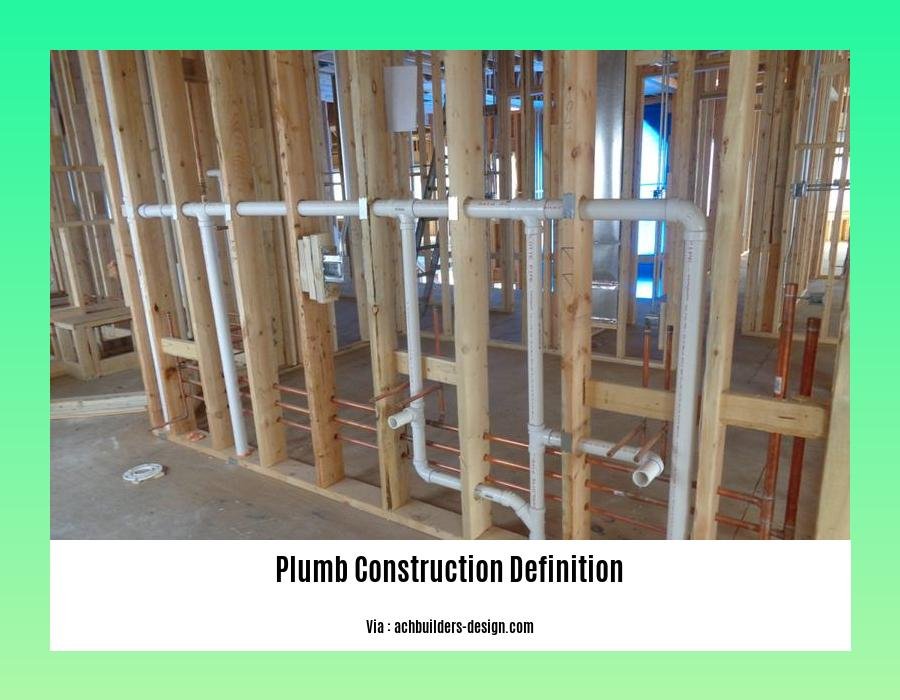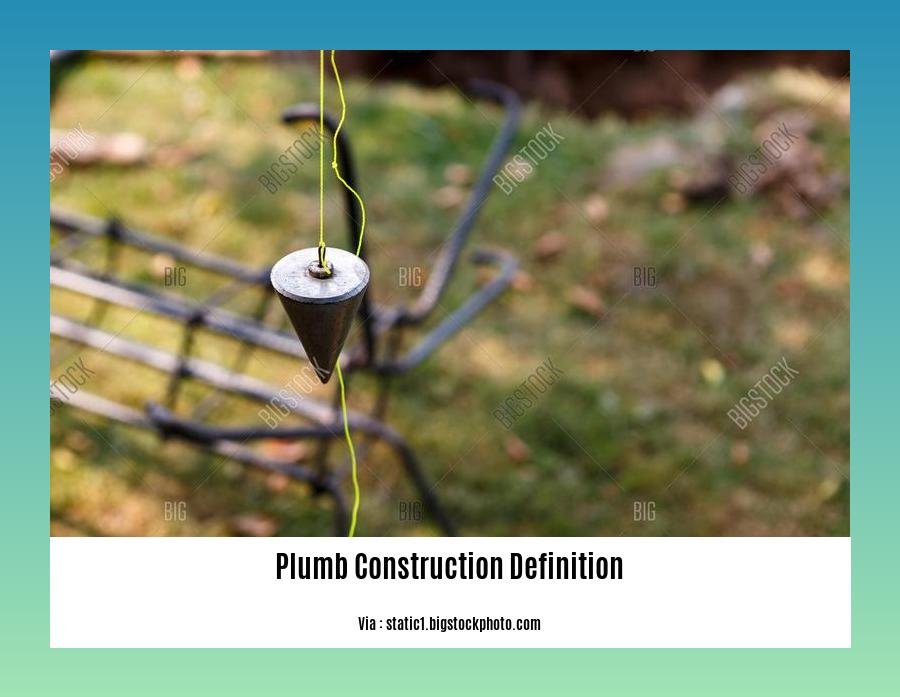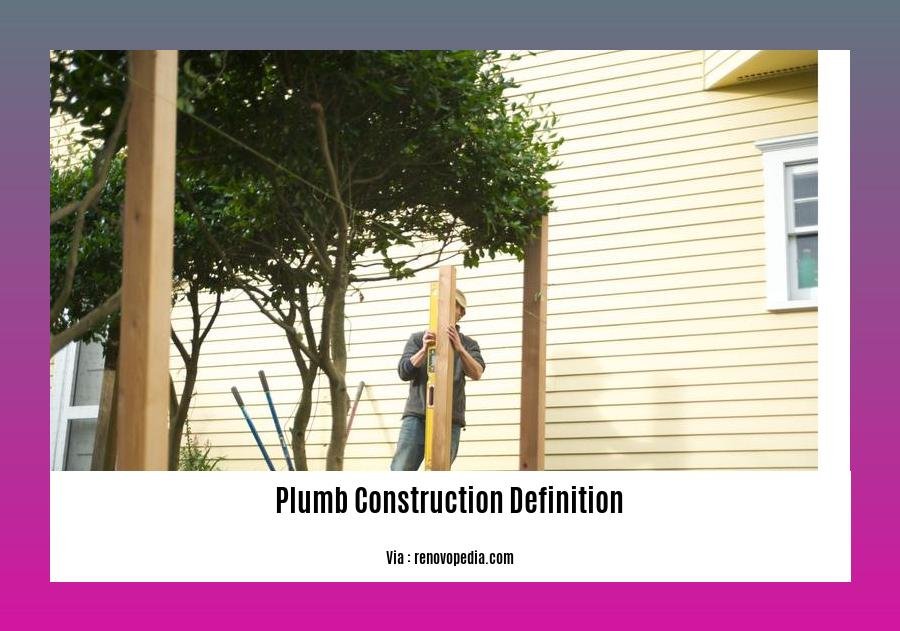Plumbing Construction: A Comprehensive Guide to Plumbing Systems. Understand the fundamentals of plumb construction with this in-depth guide. Delve into the intricate details of plumbing systems, encompassing residential, commercial, and industrial applications. Explore pipe sizing, fixture installation, drainage systems, and water heater installation, ensuring compliance with industry standards and building codes.
Key Takeaways:
- Plumb refers to vertical alignment at 90 degrees to the horizontal plane.
- Plumbness is essential for structural stability, level surfaces, and proper drainage.
- Plumbness is measured with a plumb line or level.
- Examples of plumb elements in buildings include walls, columns, and supports.
- Plumbness ensures accurate construction, preventing issues such as sloping floors and crooked walls.
Plumb Construction Definition


In the realm of construction, the term “plumb” takes on a critical role, ensuring precision and structural integrity. It describes the vertical alignment of elements, ensuring they are perpendicular to the horizontal plane and extend straight towards the earth’s center. In essence, it’s the opposite of “level,” which pertains to horizontal alignment.
Why Plumb Construction Matters:
Maintaining plumbness is paramount for several reasons:
- Structural Stability: Plumb walls, columns, and supports contribute to a building’s stability, preventing leaning or collapse.
- Level Surfaces: Accurate plumbness ensures level ceilings and floors, crucial for aesthetic appeal and functional aspects such as drainage.
- Proper Drainage: Sloped drainage systems rely on plumb vertical elements to ensure water flows efficiently and doesn’t accumulate or backflow.
How to Measure Plumbness:
Verifying plumbness involves using a plumb line or a level. A plumb line is a weighted string that hangs vertically, indicating true verticality. Levels, on the other hand, have a spirit level vial that measures the angle relative to the horizontal plane.
Achieving Plumb Construction:
To achieve plumb construction, various techniques are employed:
- Plumb Bobs: Suspending a plumb bob from a point above the element being aligned provides a reference line for plumbness.
- Laser Levels: Self-leveling laser levels project a horizontal or vertical plane, making it easy to align elements accordingly.
- Leveling Blocks: Adjustable leveling blocks can be placed under elements to compensate for uneven surfaces and achieve plumbness.
Maintaining plumbness in construction is a fundamental practice that ensures the integrity, aesthetics, and functionality of structures for years to come.
Want to know more about plumb meaning in construction? It is more than just vertical. Plumbing work in house construction is essential for a comfortable and healthy living.
The Meanings of Plumb
Plumbness in construction is a fundamental aspect that ensures the accuracy and stability of structures. It refers to the vertical alignment of elements, ensuring they are perpendicular to the horizontal plane. Understanding the various meanings of plumb is crucial for achieving precision and efficiency in construction projects.
Key Takeaways:
- Plumbness ensures the accuracy, perpendicularity, and straightness of vertical elements in a building.
- It is achieved through the use of plumb lines or levels, which measure the 90-degree angle from the horizontal plane.
- Plumb construction is essential for structural stability, level ceilings and floors, and proper drainage.
Plumbness in Various Applications:
- Walls and Columns: Plumb walls and columns provide structural support and ensure the proper alignment of building components.
- Door and Window Frames: Plumb frames ensure that doors and windows operate smoothly and seal effectively.
- Pipelines: Plumb pipelines facilitate the efficient flow of fluids, preventing leaks and ensuring system performance.
- Shelving and Cabinets: Plumb shelving and cabinets enhance stability, prevent sagging, and improve aesthetic appeal.
Tools for Achieving Plumbness:
- Plumb Line: A weighted string or chain that hangs vertically, indicating a true plumb line.
- Level: A tool with a bubble or laser that measures the horizontal or vertical alignment of surfaces.
- Laser Level: A high-tech device that projects a laser line, creating a precise reference for plumbness.
Understanding the significance and techniques of achieving plumbness empowers construction professionals to deliver high-quality, safe, and aesthetically pleasing structures.
References:
FAQ
Q1: What is the definition of “plumb” in construction?
A1: In construction, “plumb” refers to the vertical alignment of a structure or element, ensuring it is perpendicular to the horizontal plane.
Q2: What is the purpose of plumb construction?
A2: Plumb construction ensures structural stability, level ceilings and floors, and proper drainage.
Q3: How is plumb measured in carpentry?
A3: Plumb is measured using a plumb line or a level to determine if an element is 90 degrees from the horizontal plane.
Q4: What is a plumb bob?
A4: A plumb bob is a tool used to establish a vertical reference line. It consists of a weight suspended from a string and is used to ensure that a structure is plumb.
Q5: Why is plumbness important in construction?
A5: Plumbness is essential for the accuracy, stability, and aesthetics of a building. It ensures that walls, columns, and supports are properly aligned and perpendicular to the ground.
- Dora the Explorer Wipe-Off Fun: Safe & Mess-Free Activities for Little Explorers - April 18, 2025
- Does Lemongrass Repel Mosquitoes? Fact vs. Fiction + How to Use It - April 18, 2025
- Do Woodchucks Climb Trees?Fact vs. Fiction - April 18, 2025










